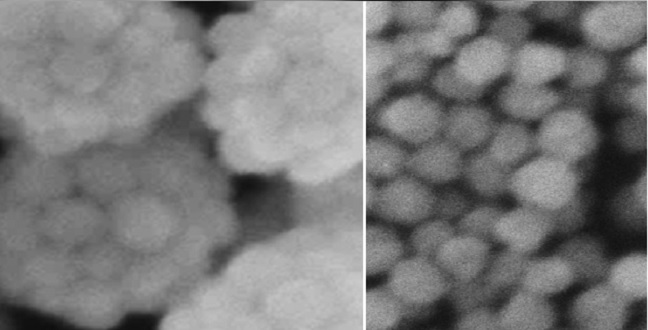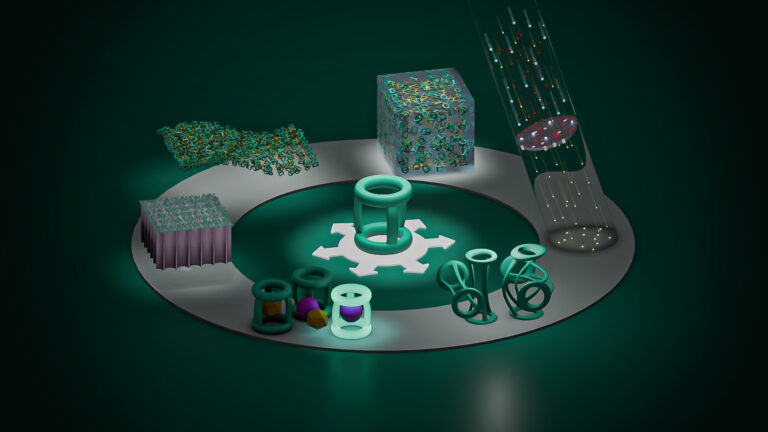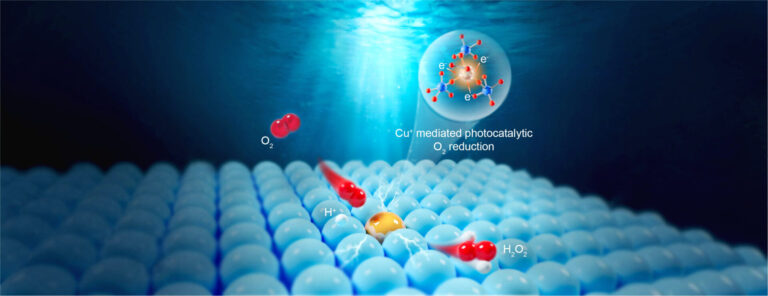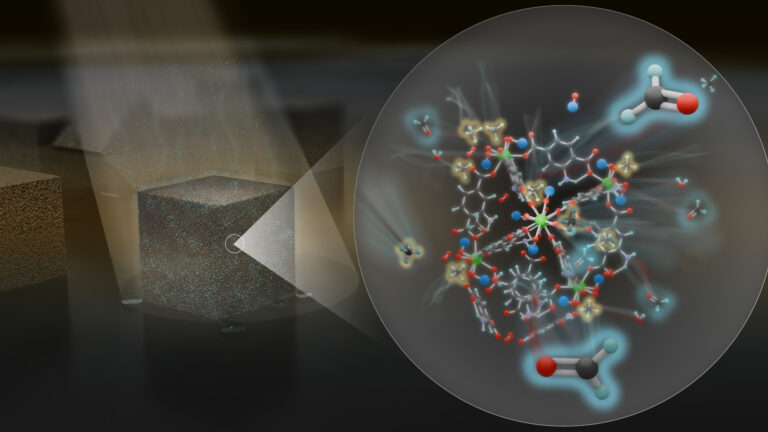Chemistry
A light load for nano-porters
Tiny carriers assembled from oppositely charged nanoparticles open to release their cargo under light exposure.


Colloidosomes assembled from positively and negatively charged nanoparticles (left) releasing their cargo molecules (right) upon light irradiation.
© 2015 KAUST
Ultra-small hollow carriers, that can be activated to deliver relatively large bioactive ‘freight’, could play a central role in biological applications, such as encapsulating enzymes to be used for replacement therapy, bacteria for immunization or even biocatalysis, show researchers from KAUST1.
Until now these tiny carriers, called colloidosomes, have been comprised of self-assembled nano-sized building blocks — such as silica nanoparticles and polymer-based rod-shaped microparticles —at the oil-in-water or water-in-oil interfaces of emulsion droplets. Typically, in addition to being unstable and highly porous, their shells have micron-sized diameters that limit their biological applicability. While multilayering prevents the passive leakage of cargo molecules through pores, covalent cross-linking effectively stabilizes the shell but traps large cargos.
Niveen Khashab from the KAUST Advanced Membranes and Porous Materials Center has developed the first light-responsive nano-sized colloidosomes using silica nanoparticles bearing opposite charges. She explains that these unique structures originate from a self-assembly process driven by simple electrostatic forces. Held together through these non-covalent inter-nanoparticle interactions, the colloidosomes readily disassembled under ultra-violet light irradiation (see image).
To create the new carriers, Khashab’s team designed a positively charged organic linker that turned neutral when exposed to light and incorporated it in silica nanoparticles at two different concentrations to generate the oppositely charged building blocks. Nanoparticles containing a low linker composition presented a negative charge whereas those displaying high linker content were positively charged in water. When mixed in water and added to an organic solvent, these nanoparticles produced stable collodoisomes in oil-in-water emulsions.
Khashab explains that a charge reversal occurs depending on the nanoparticle organic content at the point the linkers were neutralized by light. In positively charged nanoparticles with higher organic composition, this neutralization exposed the negatively charged siloxy groups, switching the overall nanoparticle charge from positive to negative. Negatively charged nanoparticles exhibited an increase in negative charge upon irradiation, resulting in repulsive forces between negatively charged nanoparticles within the colloidosomes, triggering their disassembly.
The colloidosomes also effectively encapsulated dye molecules in their cavity in oil-in-water emulsions and released most of them under light-induced disassembly.
The researchers now plan to enable the newly developed carriers to transport and release water-repelling compounds, high-molecular-weight molecules and nanoparticles. “These carriers hold large cargo molecules, including proteins, making them applicable to vaccination and enzyme replacement therapy,” says Khashab. For instance, these capsules could deliver the necessary enzyme to its site of action in patients suffering from genetic enzyme deficiencies, eliminating the need for constant enzyme injections.
References
- Li, S., Moosa, B. A., Croissant, J. G. & Khashab, N. M. Electrostatic assembly/disassembly of nanoscaled colloidosomes for light-triggered cargo release. Angewandte Chemie International Edition 54, 6804–6808 (2015).| article
You might also like

Applied Physics
Natural polymer boosts solar cells

Chemistry
Disruptive smart materials flex with real world potential

Chemistry
Catalysts provide the right pathway to green energy

Chemistry
Hollow molecules offer sustainable hydrocarbon separation

Chemistry
Maximizing methane

Chemistry
Beating the dark current for safer X-ray imaging

Chemical Engineering
Net benefits for advanced materials design

Chemical Engineering



